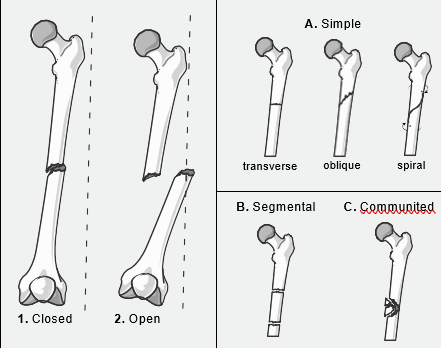Primary and complex fractures are terms used to describe the severity and complexity of a bone fracture. Let's explore these terms and their associated treatments:
Primary Fracture: A primary fracture refers to a simple fracture where the bone breaks into two pieces without any additional complications. These fractures can occur due to trauma, falls, or other injuries. Treatment for primary fractures typically involves:
- Immobilization: The affected area may be immobilized using casts, splints, or braces to stabilize the fracture and promote healing.
- Pain management: Pain medications may be prescribed to manage discomfort during the healing process.
- Rest and rehabilitation: Resting the affected limb and gradually introducing physical therapy exercises can aid in recovery and restore mobility.
- Open reduction and internal fixation (ORIF): In this surgical procedure, the fractured bone is realigned, and internal fixation devices (such as plates, screws, or rods) are used to stabilize the bone and promote proper healing.
- External fixation: In certain complex fractures, an external fixator may be used to stabilize the bone fragments. This involves placing pins or screws into the bone, which are connected to an external frame outside the body.
- Bone grafting: In cases where there is a significant loss of bone or if the fracture fails to heal properly, bone grafts may be used to promote bone regeneration and stability.
- Rehabilitation and physical therapy: Once the fracture begins to heal, rehabilitation exercises and physical therapy are crucial to restore strength, range of motion, and function of the affected limb.
- Pain management and monitoring: Pain medications, as well as close monitoring by healthcare professionals, are essential during the recovery process to manage pain and ensure proper healing.
Complex Fracture: A complex fracture is a more severe type of fracture that involves additional complications, such as multiple breaks in the bone, bone displacement, damage to surrounding tissues, or associated injuries. Complex fractures may require more extensive treatment, including:
It's important to note that the treatment approach for fractures will depend on various factors, including the location of the fracture, the extent of the damage, the patient's overall health, and the surgeon's judgment. Prompt medical attention and consultation with an orthopedic specialist are crucial to determine the most appropriate treatment plan for a primary or complex fracture.

